The history of psychedelics PART1: Before the birth Christ
THE HISTORY OF PSYCHEDELICS
PART1: Before the birth of Christ
Entheogenic ("generating the divine within") drugs have been used by various groups of people for thousands of years. There are numerous historical reports as well as modern, contemporary reports of indigenous groups using entheogens, chemical substances used in a religious, shamanic, or spiritual context, as a part of established religious rituals, as aids for personal spiritual development ("plant teachers"), as recreational drugs, and for medical and therapeutic use. The use of entheogens in human cultures is nearly ubiquitous throughout recorded history.
Terence Mckenna pioneered the idea that early prehistoric men found and ate psychedelic mushrooms which became a stepping stone for cognitive evolution, allowing humanity to emerge as the powerful mental beings that we have become today.This would have taken place in Africa and being at the fundamental basis for shamanism and animism - the earliest forms of spiritual beliefs on the planet that we know of today.
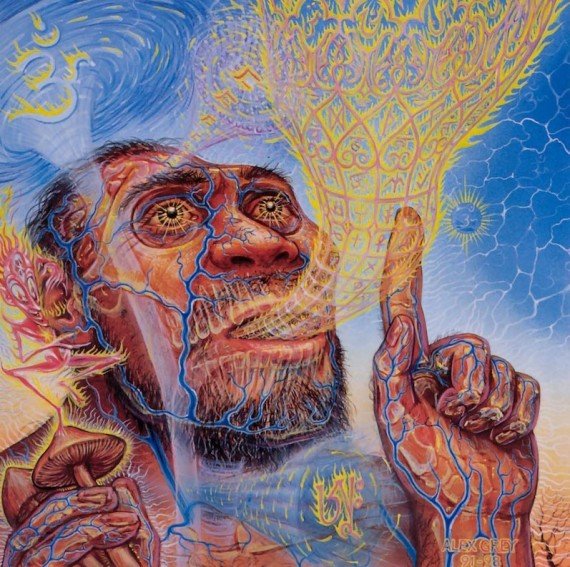
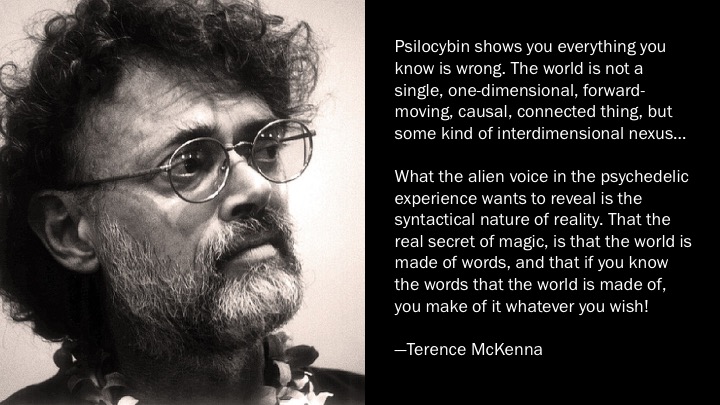
Events such as these are of course not recorded in history and thus are only theories at this time.It's important to note that until we actually have recorded history placing tangible dates on psychedelic usage, many of these dates are theories and in theory they could have been used a lot earlier in history as well.That said support for this idea is found in numerous cave paintings found around the world, dating back as early as 40,000 years and seeming to depict a very similar pattern of geometric waves emerging from the minds of the various indigenous people as well as humanoid figures with mushroom heads.
The first tangible evidence of psychedelic cultivation is debated.Some claiming to find evidence of cannabis and psychedelic mushroom cultivation as early as 15,000 BC across Asia.
Origin of the cannabis plant is lost in pre-history, although it is likely native to central Asia possibly China.It is among humanity's first cultivated crops dating back to the beginning of agriculture.Early archeological evidences date back to some 10,000 years ago and show twisted strands of hemp being used in Taiwan in the making of patterns on clay pots.The ancient Chinese wove clothes, shoes and rope from the fibers of this plant and produced the first paper from it.The Chinese were also using cannabis in traditional Chinese medicine to treat a wide variety of poisonings. Medical cannabis was used to treat vermillion poisoning, sulfur poisoning, scorpion stings among a plethora more of other ways that a person can get poisoned.It was also used as a treatment for malaria, berry berry, constipation, rheumatic pains, absent-mindedness and menstrual cramps
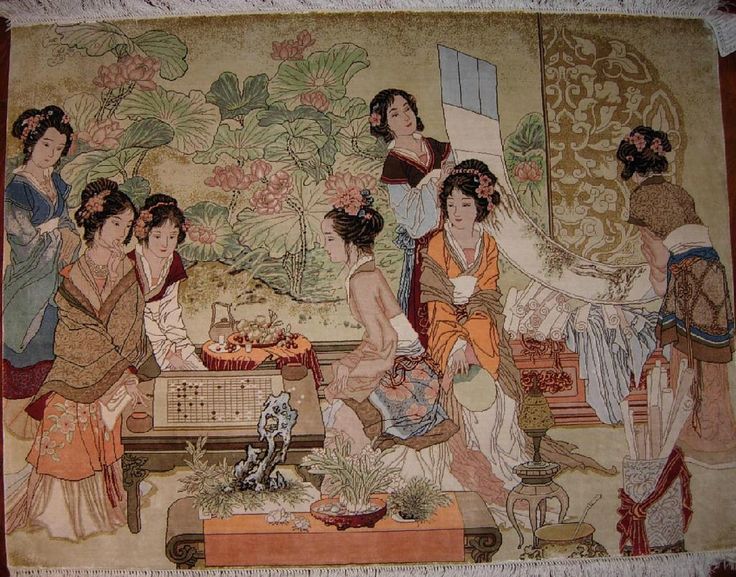
As early as 4,000 BC we find more evidence of the Amanita muscaria mushrooms used by the shamans of Siberia.Around the same time and shortly thereafter we see evidence of various psychedelics being used for spiritual practices in ancient Egypt.The blue lotus flower was revered along with the Amanita muscaria mushroom for their psychedelic and trance-inducing properties.
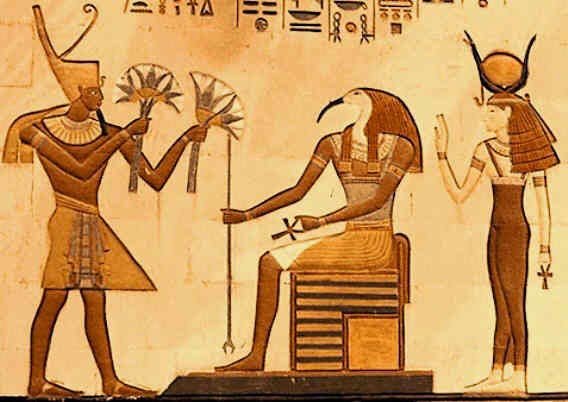

Blue Lotus flower
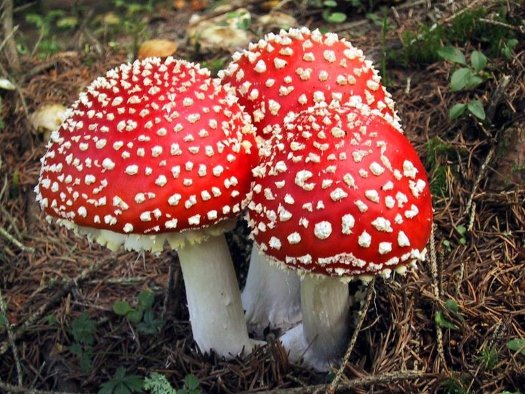
Amanita muscaria mushrooms
Hallucinogenic drugs in pre-Columbian Mesoamerican cultures included cacti (more on them later), plants and mushrooms that were used to induce altered states of consciousness in healing rituals and religious ceremonies. The Maya drank balché (a mixture of honey and extracts of Lonchocarpus) in group ceremonies to achieve intoxication. Ritual enemas and other psychoactive substances were also used to induce states of trance. Olmec, Zapotec, Maya and Aztec used peyote, hallucinogenic mushrooms (teonanacatl: Psilocybe spp.) and the seeds of ololiuhqui (Turbina corymbosa), that contain mescaline, psilocybin and lysergic acid amide, respectively. The skin of the toad Bufo spp. contains bufotoxins with hallucinogenic properties, and was used during the Olmec period. Jimson weed (Datura stramonium), wild tobacco (Nicotiana rustica), water lily (Nymphaea ampla) and Salvia divinorum were used for their psychoactive effects. Mushroom stones dating from 3000 BC have been found in ritual contexts in Mesoamerica. Archaeological evidence of peyote use dates back to over 5000 years.
Meanwhile in the Amazon jungle, evidence of Ayahuasca is seen as early back as 3,000 BC.This psychedelic brew consisted of a DMT(N,N-Dimethiltryptamine) containing plant like Psychotria viridis (chacruna) leaf or Diplopterys cabrerana (chagropanga), or mimosa tenuiflora rootbark.And a MAO(monoamine oxidase) inhibitor containing plant, usually Banisteriopsis caapi, which made the DMT orally active.Ayahuasca induces a psychedelic, visionary state of mind and this effect is employed by various people for various reasons.Shamans or medicine men take ayahuasca to communicate with nature or to see what is causing a patient’s illness on a spiritual level.
Ayahuasca plants ready for brewing
1000-2000 BCE: Petroglyphs along the Pegtymel River which drains into the Arctic Ocean in north eastern Siberia "depict anthropomorphic figures with mushrooms appended to their heads."The Pegtymel river area is currently inhabited by the modern Chukchi culture who are known to have used Amanita muscaria as a traditional inebriant.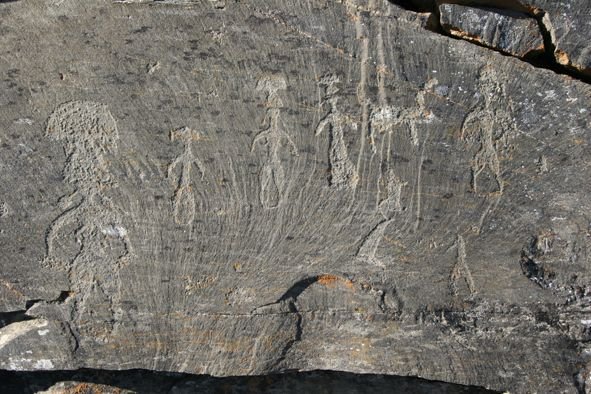
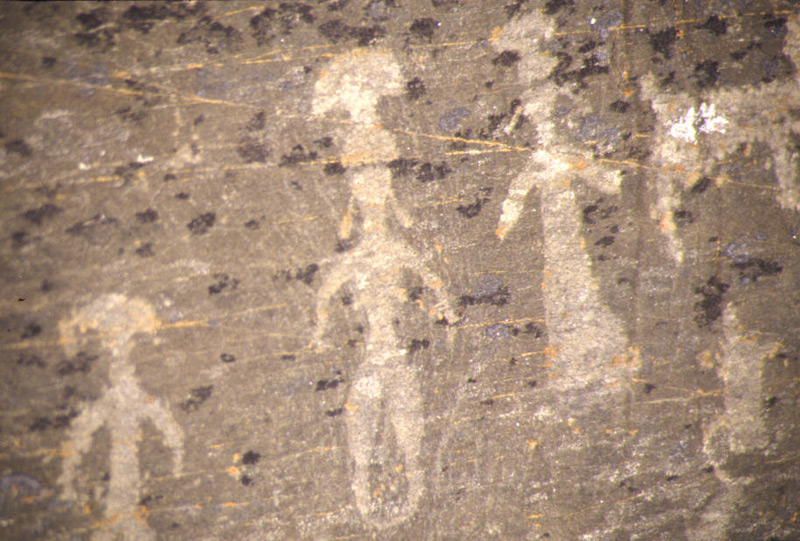
During the classical period of ancient Greece in roughly 1700 BC the Greek mysteries emerged as an evolution from the ancient Egyptian mystery schools which became widely popular and they used the substance called Chi kyun after several days of fasting which led to profound visions giving the initiates and understanding of life after death.
In 1500 BC the Rig-Vedas were written in India talking about a plant/God called Soma, introduced by the Aryans.There is not too much known about this except that based on the writings it's highly likely that Soma was a potent psychedelic drink of some kind of immense importance to spiritual ceremonies.Thought to be an elixir its consumption not only healed illness but also brought great riches. Soma is personified by the god of the same name who is also the god of sacrifices and who may, in some texts, be associated with the Moon. The drink is famously described and praised in a Mandala of the sacred Hindu text, the Rigveda.It was known for increasing awareness, imparting mystical experiences, poetic inspiration and even immortality.Many researchers today argue that it's main ingredient was the Amanita muscaria mushroom but other candidates include Sarcostemma acidum, Psilocybe cubensis (Shrooms), Peganum harmala, Ephedra, Cannabis sativa, Nelumbo nucifera, Ergot.The drink was personified as the god Soma who was considered primeval amongst the gods and a bringer of health and wealth.

Making a Soma drink
In 1200 BC a substance called Bhang, made up of dried cannabis leaves, seeds and stems are mentioned in the verses of the Hindu Atharvaveda as one of the five sacred plants of India.Hindu monks make use of the effects of bhang to boost meditation and to achieve transcendental states. In the ancient text Atharvaveda, Bhang is described as a beneficial herb that "releases anxiety". Hindus associate it with their most powerful deity Shiva. One of Shiva's epithets was "Lord of Bhang" as he is said to have discovered the transcendental properties of the mixture. Legend has it that Shiva brought bhang from the Himalayas for the pleasure of mankind.A famous Greek historian Herodotus who lived in the 4th century B.C. mentions the use of bhang among Indians. A 15th century Indian document refers to Bhang as light hearted, joyful, and inspirational spiritually to the mind and body. India’s holy men ritually use Bhang in order to facilitate communication with their deities. According to a legend, Siddhartha Gautama lived on a daily ration of one bhang seed and nothing else during his six years of asceticism.
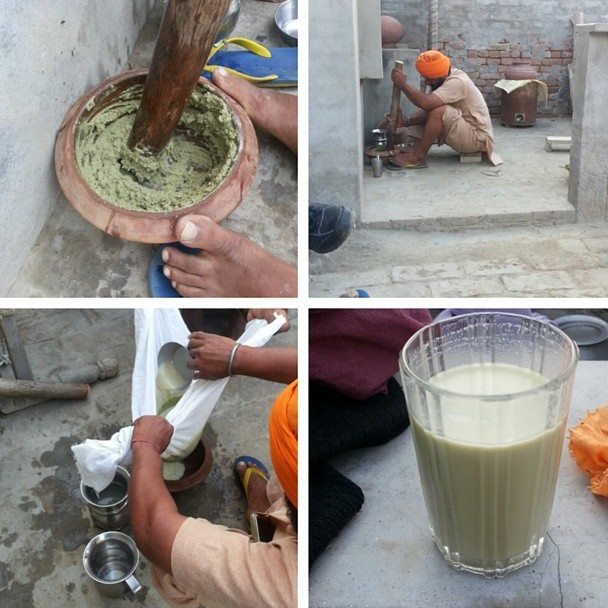
Process of making bhang into a drink
Around 1000 BC some of the original ideas of Judaism were written down for the first time.Of course it's been speculated by many historians that many of these traditions were passed down orally for a very long time.In a newly emerging theory the concept of the tree of life and the tree of knowledge of good and evil are believed to be the combination of the Siberian birch tree and the Amanita muscaria mushroom which often grow symbiotically together.

Siberian birch
During the same period we see that Peyote and Sand Pedro cacti were discovered and used by the American Indian shamans on the Western continent as well as many stones carved into magic mushrooms appearing in the Mesoamerican cultures, beginning with the Olmecs and stretching through the Incas, Mayas and other Mesoamerican cultures for the next 2,500 years.
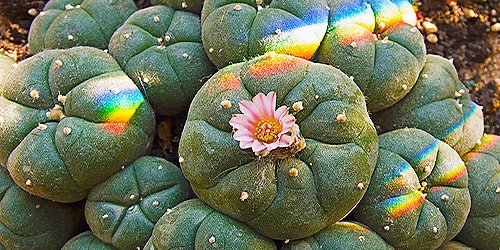
Peyote cactus flowering

San Pedro cactus

These stones indicate the existence of a sophisticated mushroom cult involving the sacramental consumption of Teonanácatl (Psilocybin mushroom)
Psychedelics in Greece continued to be used for another 1000 years in different forms.Around 800 BC the plant, recorded as Herba Apollinaris (Hebane), was used to yield oracles by the priestesses of Apollo whos would deliver messages from Apollo while intoxicated with smoke from Henbane seeds.The use of henbane by the ancient Greeks was later documented by Pliny the Elder who said it was "of the nature of wine and therefore offensive to the understanding", and by Dioscorides who recommended it as a sedative and analgesic.Henbane was historically used in combination with other plants, such as mandrake, deadly nightshade, and datura as an anaesthetic potion, as well as for its psychoactive properties in "magic brews".These psychoactive properties include visual hallucinations and a sensation of flight.It was originally used in continental Europe, Asia, and the Arab world, though it did spread to England in the Middle Ages.Recently evidence for its earlier use in the Scottish Neolithic has been debated.
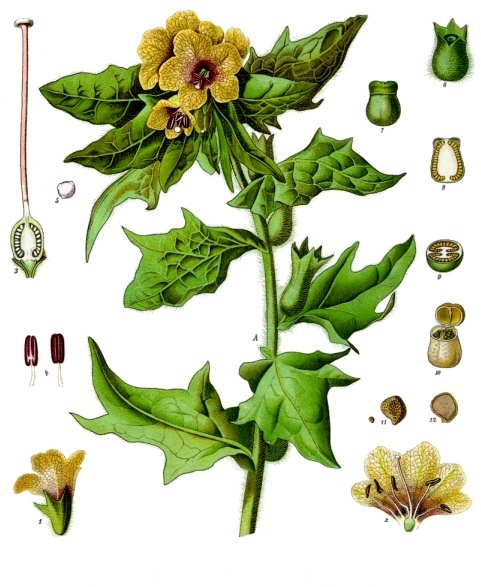
Hebane and it's seeds
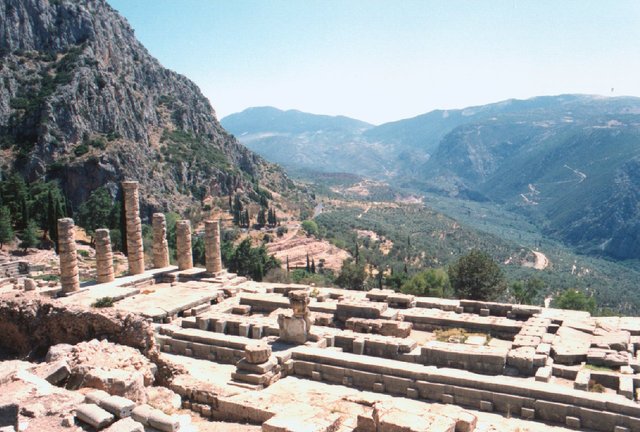
Temple of Apollo at Delphi
TO BE CONTINUED IN PART 2...
This is extensive! Definitely looking forward to Part 2. I've been interested in entheogens for over two decades. I've followed you and upvoted this post.
Thanks! You have a new follower too :) I'm working on part 2 as we speak(type lol).
https://steemit.com/psychedelics/@entheogen/the-history-of-psychedelics-part2-after-the-birth-of-christ-to-modern-times
Thanks! Looking forward to checking this out.
Wow, this is extremely comprehensive, thanks for sharing. Looking forward to part two!
Thanks :) Stay tuned for part 2.I"m very busy but I'm sure I'll be able to finish it in a few days!
Congratulations @entheogen! You have completed some achievement on Steemit and have been rewarded with new badge(s) :
Click on any badge to view your own Board of Honor on SteemitBoard.
For more information about SteemitBoard, click here
If you no longer want to receive notifications, reply to this comment with the word
STOPGreat work! thanks!
Thanks! I'm glad you like it.Stay tuned for part 2 :)
Congratulations @entheogen! You have completed some achievement on Steemit and have been rewarded with new badge(s) :
Click on any badge to view your own Board of Honor on SteemitBoard.
For more information about SteemitBoard, click here
If you no longer want to receive notifications, reply to this comment with the word
STOP